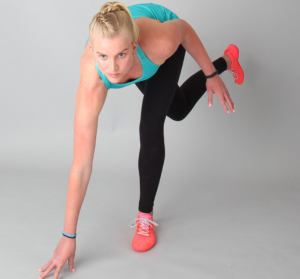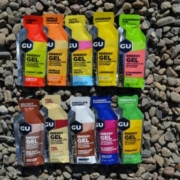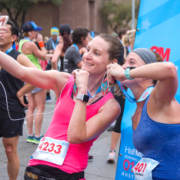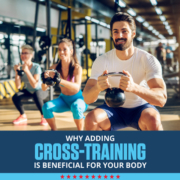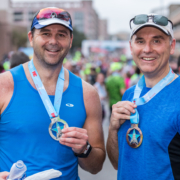Tight Hips in Runners: Signs, Symptoms, and Treatments
Keep your training on track when you prevent tight hips
Oftentimes, runners experience a feeling of tightness in and around the hip region. Especially if they’ve just begun training and have started increasing their mileage. This tightness is generally a result of stiffness in the hip flexors and prevents runners from running their best. Hip flexors, particularly the iliopsoas, are important to runners. The iliopsoas acts as the strongest flexor of the hip and is the prime mover of hip flexion. Think of your hips as the wheels that propel you forward. Tight hips can lead to poor running form and an increased risk of injury. Here are a few things you need to know about tight hips.
What causes tight hips in runners?
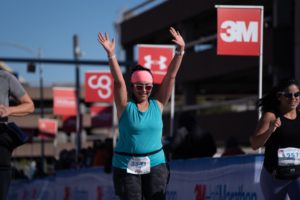
Don’t let tight hips keep you from achieving your goals!
When running, your muscles are repeatedly used in the same way. As a result, runners can experience tight hips if they don’t stretch those muscles in the opposite direction.
Another reason is overcompensation due to weakness in other muscles like your core and glutes. When other muscles used during running are weak, others have to take over and work harder. This is why cross-training is important and helpful.
Lastly, your hips can tighten if you don’t allow them to rest and recover. As simple as it sounds, this is another reason why effective recovery is so vital to a training plan. There are many different ways runners allow their body to recover: yoga, foam rolling, deep stretching, massage, etc.
Signs and symptoms
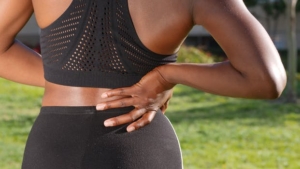
Lower back pain could be an indicator that your hips are tight.
The most obvious sign is a feeling of tightness or stiffness in your hips. Other signs include pain in your lower back, neck, or glutes due to overcompensation or abnormal running form. Runners might also experience difficulty when stretching.
Prevention
As well as regular rest and recovery, there are also many exercises, stretches, and workouts that can help prevent tight hips. Don’t forget about foam rolling! Add the technique below to your foam rolling routine to keep your hips feeling loose and refreshed.
Foam rolling technique
- Get in a plank position (on your forearms)
- Place the roller under the front of one hip
- Roll up and down slowly, focusing on the tight spots
- Twist to the side so you include the outside of your hip
- Spend 1-2 minutes in the area, then switch legs
- Breathe deeply throughout
The two stretches below will help open up and strengthen your hips. Complete them before and after your run.
Skater squat
- Stand with your legs slightly wider than hip-width
- Squat down
- As you come up, slowly put your weight on the left leg
- Extend your right leg back
- Hold this for as long as you can, up to 60 seconds (place your hand on the ground for help balancing)
- Switch legs and repeat 10 times
Crescent lunge knee-up
- Lift your right knee up to 90 degrees
- Stretch your arms out to the side to help balance
- Bring your right knee towards your chest
- Switch legs and repeat 10 times
Training your body to run long distances isn’t all about mileage. Proper rest and recovery are just as important to any run or workout. So are stretching, cross-training, and foam rolling. Tight hips can alter your form and lead to discomfort and potentially injury. Add the two exercises mentioned to your routine to help prevent stiffness in your hips and keep working towards your goals.


